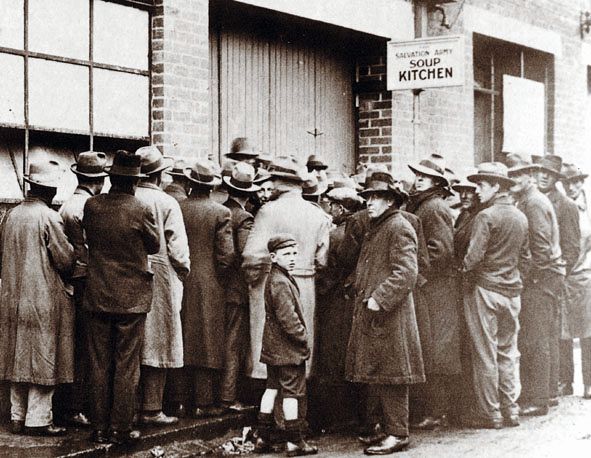
Men queuing at a Salvation Army soup kitchen during the Great Depression
In the launch episode of our new podcast Seriously Social, historian Frank Bongiorno shares what history can teach us about living through the current COVID-19 pandemic. He looks all the way back to antiquity and the Plague of Athens, which broke out during the Peloponnesian War, before exploring how Australia responded to the Spanish Influenza outbreak at the turn of the 20th century, then it’s onto the two world wars, the bleak days of the Great Depression and finally the more promising era of 1940s post-war reconstruction. We invite you to a break from the Corona headlines with the Social Sciences and this short quiz covering some of history’s most notorious global crises.
 For more, tune into Episode 1 of Seriously Social ‘Spanish flu to social distancing: how history can help us understand how to live through a pandemic’.
For more, tune into Episode 1 of Seriously Social ‘Spanish flu to social distancing: how history can help us understand how to live through a pandemic’.
Quiz: Tipping Point
1. During the Peloponnesian War, the two most powerful city-states in ancient Greece went to war from 431 to 405 BC. Who were they?
2. In the midst of the fighting, the Athenians experienced a major setback when a plague broke out in 430 BC. Although social distancing was recommended, a huge percentage of the population died of infection, including doctors treating the sick. What percentage of the Athenian population died: one-quarter, half or two-thirds?
3. The Spanish Flu of 1918 was an unusually deadly influenza pandemic lasting from January 1918 to December 1920 that infected around 500 million people globally – about a third of the world’s population at the time. The deadly virus did not originate in Spain, so why was it called the Spanish Flu?
4. The Great Depression that followed the 1929 Wall Street Crash sunk global economies, and by 1933, one in three Australian breadwinners was unemployed, and living on the breadline. What is the root of the phrase ‘on the breadline’?
5. What Sydney icon was constructed during the Great Depression? Clue: it became known as the city’s ‘iron lung’.
6. HC “Nugget” Coombs was an Australian economist and public servant who was an enormously influential figure in Australia’s post-war reconstruction period. He was in charge of Australia’s wartime rationing policy and became director-general of post-war reconstruction in 1943, overseeing employment stimulus, new social welfare payments and working with the state governments to provide housing and hospitals – all measures designed to grow the economy. What state was he born in?